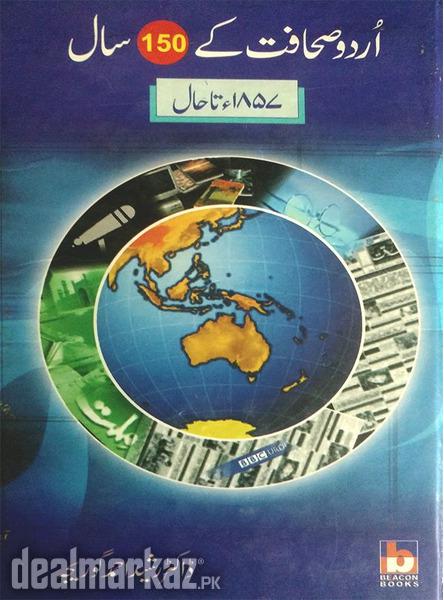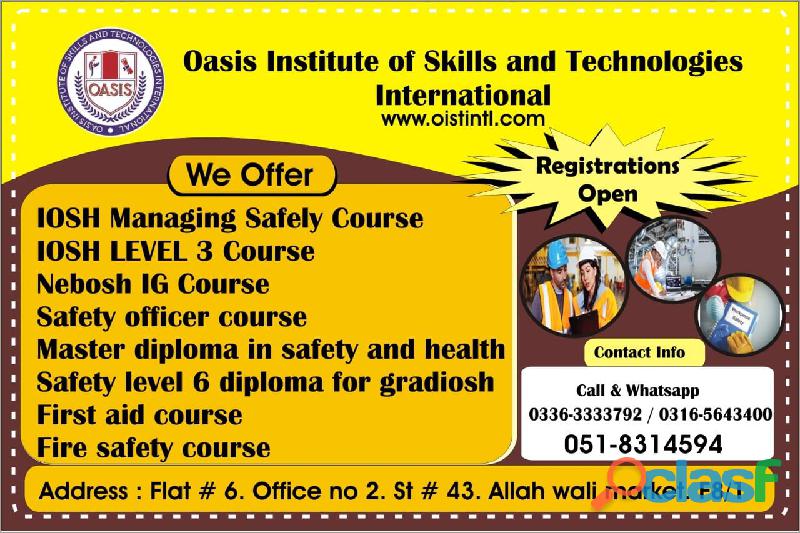Rawalpindi (Punjab)
Institute of Technologies Pakistan.051-4852895. Rawlapindi.Islamabad.Microsoft Office is an office suite of applications, servers and services. It was first announced by Bill Gates of Microsoft on 1 August 1988 at COMDEX in Las Vegas. Initially a marketing term for a bundled set of applications, the first version of Office contained Microsoft Word, Microsoft Excel and Microsoft PowerPoint. Over the years, Office applications have grown substantially closer with shared features such as a common spell checker, OLE data integration and Visual Basic for Applications scripting language. Microsoft also positions Office as a development platform for line-of-business software under the Office Business Applications brand. On 10 July 2012, Softpedia reported that Office is used by over a billion people worldwide. The desktop version of Office is available for Windows and OS X. A touch-optimised version of Microsoft Office is available pre-installed on Windows RT tablets. A mobile version of Office, Office Mobile, is available for free on Windows Phone, iOS and Android. A web-based version of Office, Office Online, is also available.[5] Microsoft has stated that it plans to create a version of Office for "other popular platforms" as well.[citation needed] The current desktop version is Office 2016 for Windows and OS X, released on 22 September 2015[6] and 9 July 2015,[3] respectively. Contents 1 Desktop components 1.1 Word 1.2 Excel 1.3 PowerPoint 1.4 Access 1.5 Outlook 1.6 OneNote 1.7 Other desktop applications 1.8 Server applications 1.9 Web services 2 Office Mobile 3 Common features 4 File formats and metadata 5 Extensibility 6 Password protection 7 Versions available 7.1 Compatibility 7.2 Licensing 7.3 Support 8 Discontinued applications and features 8.1 Discontinued server applications 8.2 Discontinued web services 9 Version history 9.1 Windows versions 9.2 Mac versions 10 References 11 External links Desktop components[edit] Word Main article: Microsoft Word Microsoft Word is a word processor and was previously considered the main program in Office. Its proprietary DOC format is considered a de facto standard, although Word 2007 can also use a new XML-based, Microsoft Office-optimized format called .DOCX, which has been standardized by Ecma International as Office Open XML, and its SP2 update supports PDF and a limited ODF.[7] Word is also available in some editions of Microsoft Works. It is available for the Windows and OS X platforms. The first version of Word, released in the autumn of 1983, was for the MS-DOS operating system and had the distinction of introducing the mouse to a broad population. Word 1.0 could be purchased with a bundled mouse, though none was required. Following the precedents of LisaWrite and MacWrite, Word for Macintosh attempted to add closer WYSIWYG features into its package. Word for Mac was released in 1985. Word for Mac was the first graphical version of Microsoft Word. Excel Main article: Microsoft Excel Microsoft Excel is a spreadsheet program that originally competed with the dominant Lotus 1-2-3, and eventually outsold it. It is available for the Windows and OS X platforms. Microsoft released the first version of Excel for the Mac OS in 1985, and the first Windows version (numbered 2.05 to line up with the Mac and bundled with a standalone Windows run-time environment) in November 1987. It provided more functionality than the previous version. PowerPoint Main article: Microsoft PowerPoint Microsoft PowerPoint is a presentation program for Windows and OS X. It is used to create slideshows, composed of text, graphics, and other objects, which can be displayed on-screen and shown by the presenter or printed out on transparencies or slides. Access Main article: Microsoft Access Microsoft Access is a database management system for Windows that combines the relational Microsoft Jet Database Engine with a graphical user interface and software-development tools. Microsoft Access stores data in its own format based on the Access Jet Database Engine. It can also import or link directly to data stored in other applications and databases. Outlook Main articles: Microsoft Outlook and Microsoft Entourage Microsoft Outlook (not to be confused with Outlook Express) is a personal information manager. The replacement for Windows Messaging, Microsoft Mail, and Schedule+ starting in Office 97, it includes an e-mail client, calendar, task manager and address book. On the Mac OS, Microsoft offered several versions of Outlook in the late 1990s, but only for use with Microsoft Exchange Server. In Office 2001, it introduced an alternative application with a slightly different feature set called Microsoft Entourage. It reintroduced Outlook in Office 2011, replacing Entourage.[9] OneNote Main article: Microsoft OneNote Microsoft OneNote is a freeware notetaking program. It gathers notes (handwritten or typed), drawings, screen clippings and audio commentaries. Notes can be shared with other OneNote users over the Internet or a network. OneNote was initially introduced as a standalone app that was not included in any of Microsoft Office 2003 editions. However, OneNote eventually became a core component of Microsoft Office; with the release of Microsoft Office 2013, OneNote was included in all Microsoft Office offerings before eventually becoming completely free of charge. OneNote is available as a web application on Office Online, a Windows desktop app, a mobile app for Windows Phone, iOS, Android, and Symbian, and a Metro-style app for Windows 8 or later. Other desktop applications Other desktop applications included in Microsoft Office suite include: Microsoft Publisher: desktop publishing app mostly used for designing brochures, labels, calendars, greeting cards, business cards, newsletters, web site, and postcards Microsoft Lync: integrated communications client for conferences and meetings in real time (known as Microsoft Office Communicator in Office 2007, bundled with Professional Plus and Enterprise editions[10]). In 2015 Q1 Microsoft re branded Lync as 'skype for business' after acquiring Skype. Microsoft Project: project management software to keep track of events and to create network charts and Gantt charts, not bundled in any Office suite Microsoft Visio: diagram and flowcharting program not bundled in any Office suite Microsoft SharePoint Designer: a specialized HTML editor for Windows that develops SharePoint sites, now part of Microsoft SharePoint family and offered as an independent freeware download Server applications[edit] Microsoft SharePoint: collaboration server Excel Services InfoPath Forms Services Microsoft Project Server: project management server Microsoft Search Server Microsoft Lync Server (formerly Office Communications Server and Live Communications Server) – real time communications server Web services[edit] Docs.com: A place where Office users can discover, upload and share Word, Excel, PowerPoint, Sway and PDF files on their profile page Microsoft Office Online: A suite of web-based versions of Microsoft Word, Excel, OneNote and PowerPoint Sway: A presentation web app in preview status released in October 2014. It also has a native app for iOS and Windows 10. Microsoft Office website: The official website of Microsoft Office Microsoft Update: Web site. Patch detection and installation service for Microsoft Office. Microsoft Office 365: Subscription-based software services that licenses Microsoft Office products for on-premises or cloud-based use. Office Mobile Main article: Microsoft Office Mobile Office Mobile includes the scaled-down and touch-optimised versions of Word, Excel and PowerPoint. Other Office applications such as OneNote, Lync and Outlook are available as standalone apps.[11] Office Mobile enables users to save and access documents on OneDrive, OneDrive for Business, and SharePoint. Additionally, the Windows Phone version also allows users to save files locally on the device. According to Microsoft, Office Mobile for iPhone and Android are "very similar" to each other, whereas the Windows Phone version provides a "richer, more integrated experience". Office Mobile for iPhone was released on 14 June 2013 in the United States.[13] Support for 135 markets and 27 languages was rolled out over a few days.[14] It requires iOS 7 or later.[15] Although the app also works on iPad devices, excluding the first generation, it is designed for a small screen.[13] Office Mobile was released for Android phones on 31 July 2013 in the United States. Support for 117 markets and 33 languages was added gradually over several weeks.[12] It is supported on Android 4.0 and later.[16] Office Mobile for both iPhone and Android, available for free from the App Store and Google Play Store respectively, initially required a qualifying Office 365 subscription to activate, but in March 2014, with the release of Office for iPad, the apps were updated making them fully free for home use, although a subscription is still required for business use. On 6 November 2014, Microsoft released updated versions of Word, Excel and Powerpoint for iOS. On 24 June 2015, Microsoft released updated versions of Word, Excel and Powerpoint for Android. In January 2015, Microsoft unveiled updated universal app versions of the Office applications for Windows 10 devices—including tablets and smartphones—that are based upon the previously released Android and iOS apps. Common features Most versions of Microsoft Office (including Office 97 and later) use their own widget set and do not exactly match the native operating system. This is most apparent in Microsoft Office XP and 2003, where the standard menus were replaced with a colored, flat-looking, shadowed menu style. The user interface of a particular version of Microsoft Office often heavily influences a subsequent version of Microsoft Windows. For example, the toolbar, colored buttons and the gray-colored 3D look of Office 4.3 were added to Windows 95, and the ribbon, introduced in Office 2007, has been incorporated into several programs bundled with Windows 7 and later. Users of Microsoft Office may access external data via connection-specifications saved in Office Data Connection (.odc) files.[25] Both Windows and Office use service packs to update software. Office had non-cumulative service releases, which were discontinued after Office 2000 Service Release 1. Past versions of Office often contained Easter eggs. For example, Excel 97 contained a reasonably functional flight-simulator. Office XP and later do not have any Easter eggs, in compliance with Trustworthy Computing guidelines. File formats and metadata Microsoft Office prior to Office 2007 used proprietary file formats based on the OLE Compound File Binary Format.[26] This forced users who share data to adopt the same software platform.[27] In 2008, Microsoft made the entire documentation for the binary Office formats freely available for download and granted any possible patents rights for use or implementations of those binary format for free under the Open Specification Promise.[28][29] Previously, Microsoft had supplied such documentation freely but only on request. Starting with Office 2007, the default file format has been a version of Office Open XML, though different than the one standardized and published by Ecma International and by ISO/IEC. Microsoft has granted patent rights to the formats technology under the Open Specification Promise[31] and has made available free downloadable converters for previous versions of Microsoft Office including Office 2003, Office XP, Office 2000[32] and Office 2004 for OS X. Third-party implementations of Office Open XML exist on the Windows platform (LibreOffice, all platforms), OS X platform (iWork '08, LibreOffice) and Linux (LibreOffice and OpenOffice.org 3.0). In addition, Office 2010 and Service Pack 2 for Office 2007 supports the OpenDocument Format (ODF) for opening and saving documents. Microsoft provides the ability to remove metadata from Office documents. This was in response to highly publicized incidents where sensitive data about a document was leaked via its metadata.[33] Metadata removal was first available in 2004, when Microsoft released a tool called Remove Hidden Data Add-in for Office 2003/XP for this purpose.[34] It was directly integrated into Office 2007 in a feature called the Document Inspector Extensibility A major feature of the Office suite is the ability for users and third party companies to write add-ins (plug-ins) that extend the capabilities of an application by adding custom commands and specialized features. One of the new features is the Office Store.[35] Plugins and other tools can be downloaded by users.[36] Developers can make money by selling their applications in the Office Store. The revenue is divided between the developer and Microsoft where developer gets 80% of the money.[37] Developers are able to share applications with all Office users (who Microsoft says number at 1 billion).[37] One such example of Office app is a heat map for Excel. The app travels with the document, and it's up to the developer what the recipient will see when they open it. They'll either have the option to download the app from the Office Store for free, start a free trial or be directed to payment.[37] With Office's cloud abilities, IT department can create a set of apps for their business employees.[38] When employees go to the Office Store, they'll see their company's apps under My Organization. The apps that employees have personally downloaded will appear under My Apps.[37] Developers can use web technologies like HTML5, XML, CSS3, JavaScript, and APIs for building the apps.[39] An application for Office is a webpage that is hosted inside an Office client application. User can use apps to amplify the functionality of a document, email message, meeting request, or appointment. Apps can run in multiple environments and by multiple clients, including rich Office desktop clients, Office Web Apps, mobile browsers, and also on-premises and in the cloud.[39] The type of add-ins supported differ by Office versions: Office 97 onwards (standard Windows DLLs i.e. Word WLLs and Excel XLLs) Office 2000 onwards (COM add-ins)[40] Office XP onwards (COM/OLE Automation add-ins)[41] Office 2003 onwards (Managed code add-ins – VSTO solutions)[42] Password protection[edit] Main article: Microsoft Office password protection Microsoft Office has security feature which allows users to encrypt Office (Word, Excel, PowerPoint) documents with user provided password. User password can contain up to 255 characters and uses AES 128-bit advanced encryption by default.[43] Password could be used to restrict modification of the entire document, worksheet or presentation. Due to lack of document encryption most passwords could be cracked using a third-party cracking software.[44] Versions available[edit] Compatibility[edit] Microsoft supports Office for the Windows and OS X platforms, as well as mobile versions for Windows Phone, Android and iOS platforms. Beginning with Mac Office 4.2, the OS X and Windows versions of Office share the same file format, and are interoperable. Visual Basic for Applications support was dropped in Microsoft Office 2008 for Mac,[45] then reintroduced in Office for Mac 2011.[46] Microsoft tried in the mid-1990s to port Office to RISC processors such as NEC/MIPS and IBM/PowerPC, but they met problems such as memory access being hampered by data structure alignment requirements. Microsoft Word 97 and Excel 97 however did ship for the DEC Alpha platform. Difficulties in porting Office may have been a factor in discontinuing Windows NT on non-Intel platforms.[47] Stuart Cohen, CEO of Open Source Development Labs, conjectured in 2006 that Microsoft would eventually release a Linux port of Office,[48] which occurred via Microsoft Office Mobile for Android phones (OS 4.0 or later) in 2013 and tablets (OS 4.4 or later) in 2015. Office is also available for iOS, another Unix-like platform. Office for Windows Phone and the older Windows Mobile are distinguished from Windows NT versions.


















